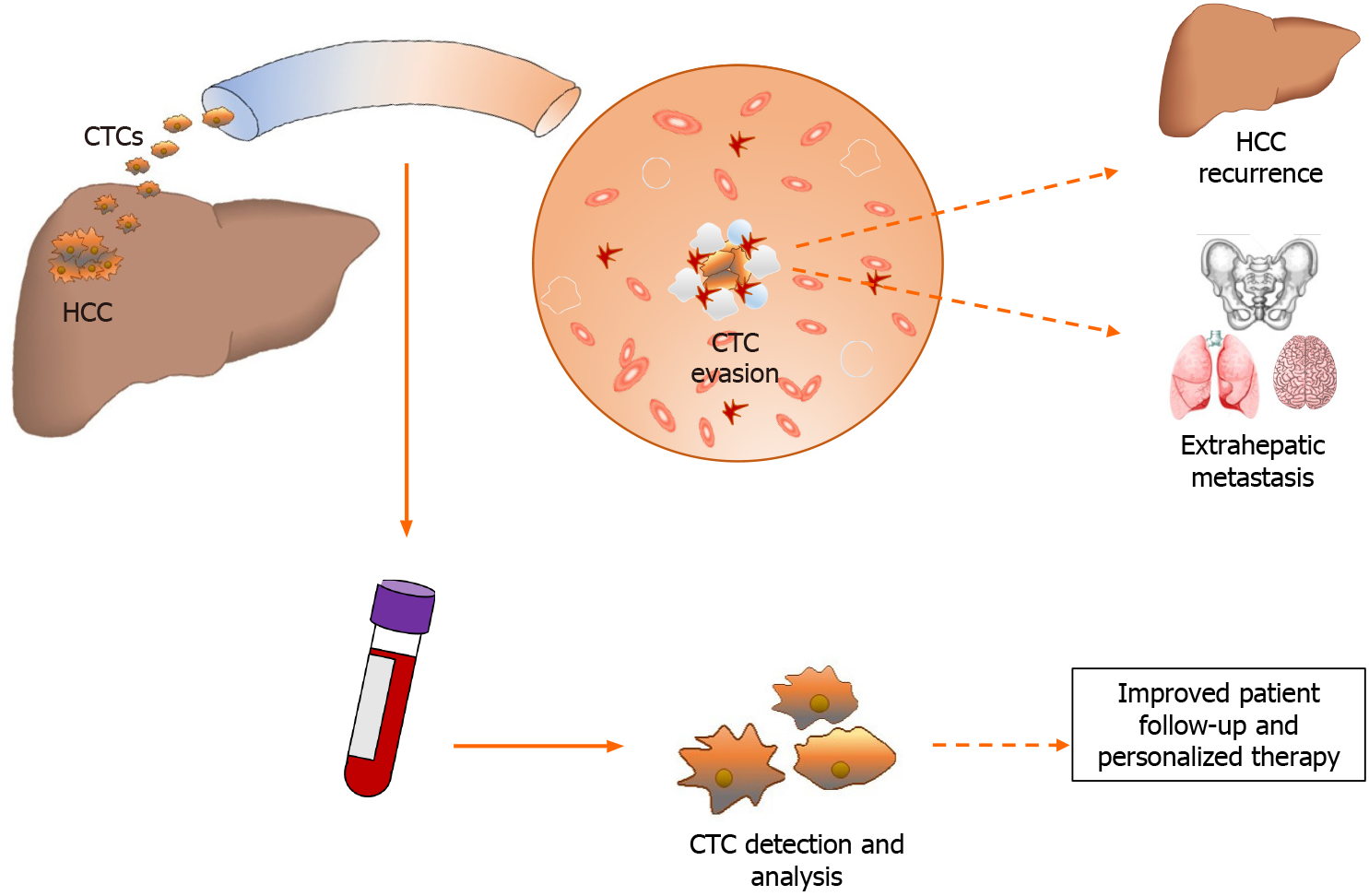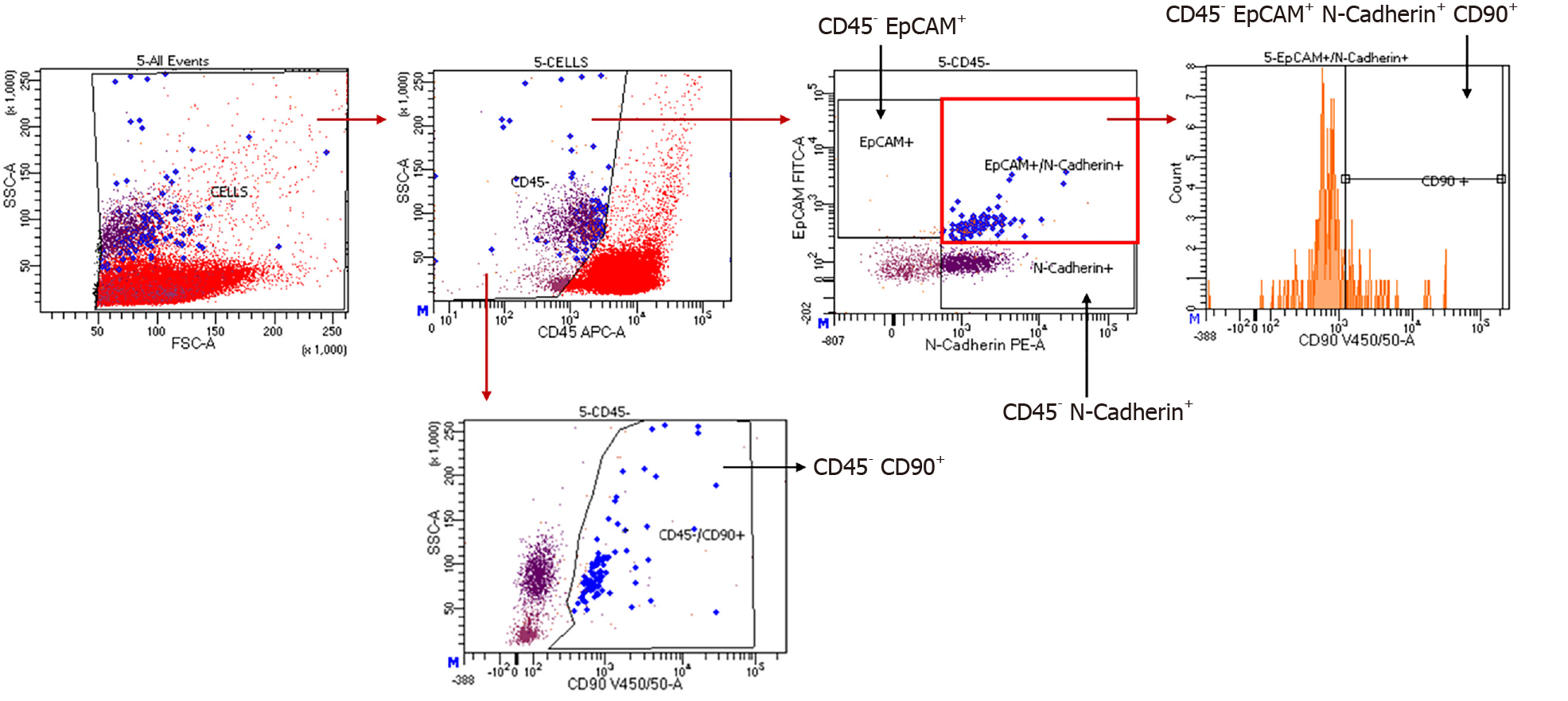Copyright
©The Author(s) 2021.
World J Gastrointest Surg. Sep 27, 2021; 13(9): 967-978
Published online Sep 27, 2021. doi: 10.4240/wjgs.v13.i9.967
Published online Sep 27, 2021. doi: 10.4240/wjgs.v13.i9.967
Figure 1 Hepatocellular carcinoma releases tumor cells into circulation where they become circulating tumor cells.
Circulating tumor cells after evading the immune system can cause hepatocellular carcinoma recurrence or distant metastasis. The liquid biopsy intercepts these cells into the bloodstream and allows to study the tumor characteristics and guarantee personalized therapy. CTCs: Circulating tumor cells; HCC: Hepatocellular carcinoma.
Figure 2 Frequently used markers for circulating tumor cell detection hepatocellular carcinoma-related.
Epithelial cell adhesion molecule+ circulating tumor cell identification is often combined with cytokeratins, vimentin, twist, Glypican-3 and asialoglycoprotein receptor (ASGPR). In some cases, ASGPR is also used with the hepatocellular marker carbamoyl-phosphate synthetase 1 (Venn diagram). Tree diagram show the number of articles (N.) that use different marker combinations for circulating tumor cell isolation. Bibliography counts articles related to hepatocellular carcinoma field and published from 2009 to 2020. EpCAM: Epithelial cell adhesion molecule; CKs: Cytokeratins; ASGPR: Asialoglycoprotein receptor; GPC3: Glypican-3; CPS1: Carbamoyl-phosphate synthetase 1.
Figure 3
Representative example of a patient’s PBMC analysis within the FINDINGBIOREC protocol.
- Citation: Carissimi F, Barbaglia MN, Salmi L, Ciulli C, Roccamatisi L, Cordaro G, Mallela VR, Minisini R, Leone BE, Donadon M, Torzilli G, Pirisi M, Romano F, Famularo S. Finding the seed of recurrence: Hepatocellular carcinoma circulating tumor cells and their potential to drive the surgical treatment. World J Gastrointest Surg 2021; 13(9): 967-978
- URL: https://www.wjgnet.com/1948-9366/full/v13/i9/967.htm
- DOI: https://dx.doi.org/10.4240/wjgs.v13.i9.967















